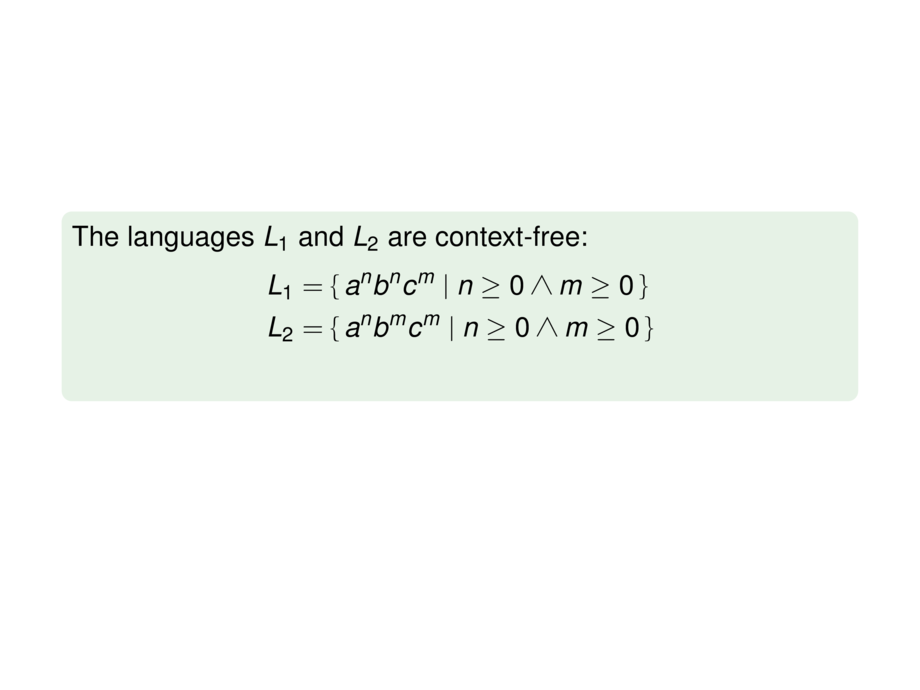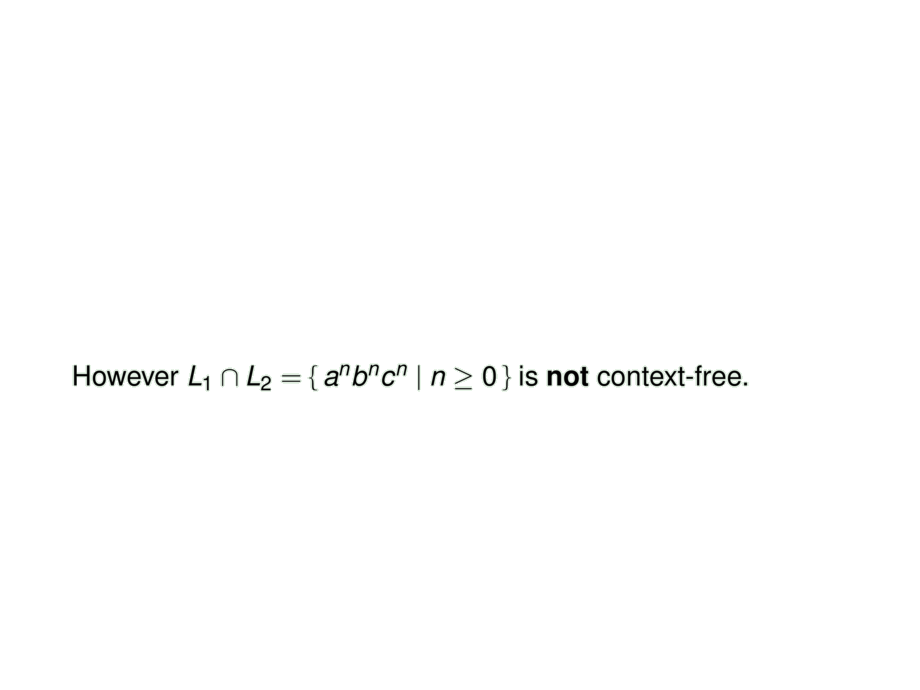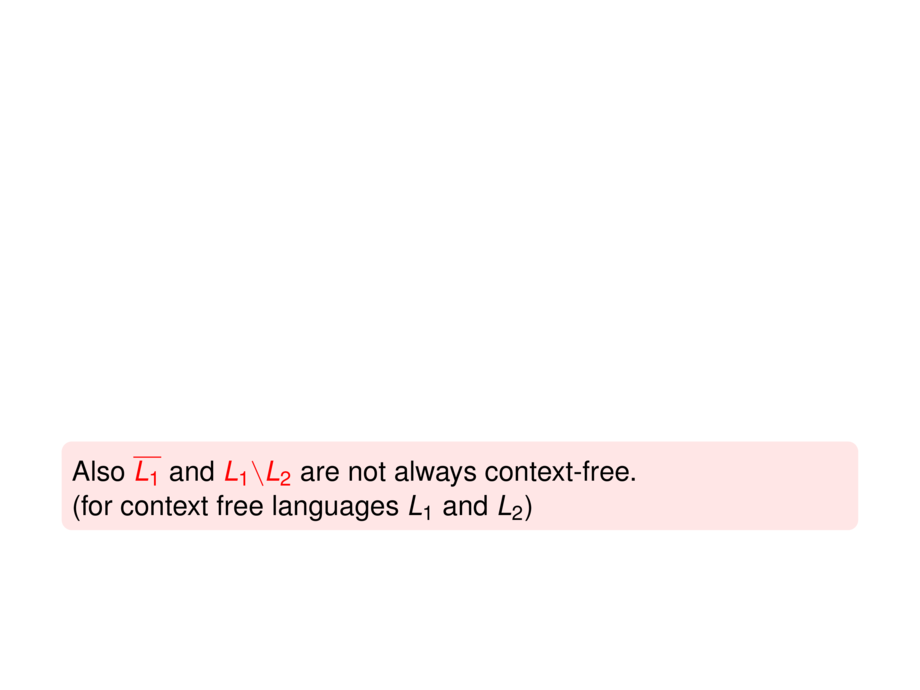



































































































16/46
\begin{frame}{Basic Properties of Context-Free Languages}
\begin{alertblock}{}
The intersection \alert{$L_1 \cap L_2$} is \alert{not} always context-free.\\
(for context free languages $L_1$ and $L_2$)
\end{alertblock}
\pause\smallskip
\begin{exampleblock}{}
The languages $L_1$ and $L_2$ are context-free:
\begin{talign}
L_1 &= \{\, a^n b^n c^m \mid n \geq 0 \wedge m \geq 0 \,\} \\
L_2 &= \{\, a^n b^m c^m \mid n \geq 0 \wedge m \geq 0 \,\}
\end{talign}
\pause
However $L_1 \cap L_2 = \{\, a^n b^n c^n \mid n \geq 0 \,\}$ is \emph{not} context-free.
\end{exampleblock}
\pause\medskip
\begin{alertblock}{}
Also \alert{$\overline{L_1}$} and \alert{$L_1\backslash L_2$} are not always context-free.\\
(for context free languages $L_1$ and $L_2$)
\end{alertblock}
\pause\smallskip
\begin{exampleblock}{}
Namely, we have:
\begin{talign}
L_1 \cap L_2 &= \overline{\overline{L_1} \cup \overline{L_2}} &
\overline{L_1} &= \Sigma^* \setminus L_1
\end{talign}
\end{exampleblock}
\end{frame}

